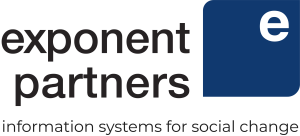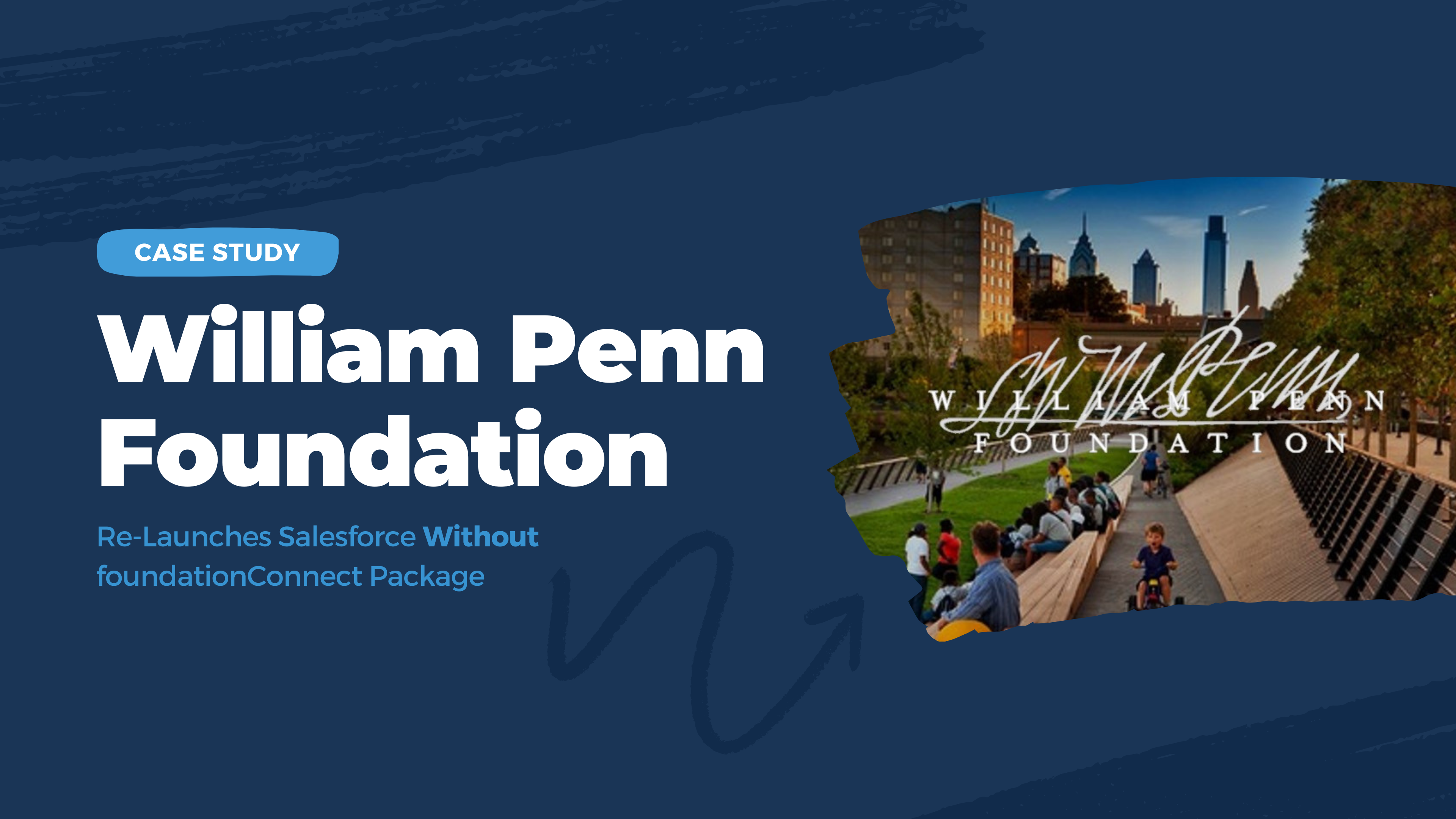Case Study: William Penn Foundation Re-Launches Salesforce Without foundationConnect Package
By Samantha Shain, Data Solutions Manager, William Penn Foundation
Introducing The William Penn Foundation
Founded in 1945 by Otto and Phoebe Haas, the William Penn Foundation funds nonprofits in the Philadelphia area across three main strategies: environmental protection, early childhood education, and arts and public space. The Foundation awards about 400 grants per year, totalling $150M.
In 2017, the Foundation partnered with Exponent Partners to move to the Salesforce platform for grantmaking. This was a dramatic shift away from legacy technology. For the first time, the Foundation had all grant materials in one system and streamlined automation to move grant proposals through compliance and review processes.
That first system implementation included not only common Salesforce products like Nonprofit Success Pack (NPSP) and Digital Experiences (formerly Community Cloud), but also many apps, including foundationConnect, Conga Composer, Box, Campaign Monitor, and more.
Changes on the horizon
In 2020, after acquiring foundationConnect, Salesforce announced a new product for grantmaking that would eventually replace foundationConnect. Meanwhile, the William Penn Foundation realized that limited foundationConnect features were preventing further innovation with Salesforce and their grant development process. In particular, the user experience for both Foundation staff and grantseekers was confusing and ineffective. The Foundation’s internal Salesforce-supporting team could not take advantage of new Salesforce features due to limitations in foundationConnect.
In 2022, The William Penn Foundation staff and leadership decided that it was time for a change.
A solid plan begins with… a plan
No, that’s not a typo! For big technology projects, “planning to plan” is an important first step. The Foundation worked with Exponent Partners for about six months to do a top-to-bottom audit of current system functionality, unmet needs and complex processes. The result of this planning process was a report that outlined new system architecture, critical product selections and a phased project sequence to make such a big change with minimal disruption. Before they started to modify any Salesforce features, the combined Exponent Partners and William Penn Foundation project team made some core decisions that ultimately helped the project meet all of its objectives. For example,
- The Foundation decided to remove foundationConnect and replace it with custom development rather than purchasing a different grantmaking package;
- The Foundation decided to forgo a third-party form building product, and instead build all application and grantee reporting forms in Flow;
- Foundation technical staff decided to pursue an unorthodox (but very effective) teaming strategy, where internal Salesforce Admins collaborated directly with Consultants from Exponent Partners to build and test all features.
Building phase
The system build was a 10-month project, divided into about 3 sprint cycles. This allowed the William Penn Foundation to use an iterative approach to low-code custom development based on Salesforce while still meeting important schedule milestones.
In addition to the core project requirement to remove foundationConnect, the Foundation had the opportunity to complete previously “deferred maintenance” such as:
- Revising record types and page layouts,
- Moving all Process Builders to Flow, and
- Improving graphics and branding for an enhanced user interface (UI) in Salesforce and in the grantee portal.
The combined project team rebuilt the way Foundation staff “invite” grantees to submit a proposal for funding, thereby reducing time consuming mistakes and providing a better experience for grantseekers. They also dramatically reimagined the way grant application forms are presented in the William Penn Foundation Grantee Community, making them much easier to view, share, validate, download and ultimately submit applications. Additionally, applications are now able to have “conditional” questions, which was previously not possible in foundationConnect. This allows Foundation staff to ask the right questions at the right time, while reducing the burden of maintaining dozens of similar forms for the technical team.
Project Outcomes
The William Penn Foundation now enjoys a far more modern, flexible and usable system. Some examples of how their enterprise grant management system has been radically improved are as follows:
- Grantee portal: Grantees can now do more than simply submit forms. They can view information about all of their organization’s active grants, including payment and requirement schedules.
- Responding to grantee feedback: William Penn Foundation now has the ability to download blank template forms as well as completed forms, and the William Penn Foundation team reduced form length by about 10% across the board.
- User experience: Users can now create a grant record by simply clicking an easy hyperlink. Font, colors, and layout are all intentional and configurable.
- Combined payment and requirement scheduling in one custom-coded “wizard”: In foundationConnect, this was a two-step process and now it can all happen on one screen view.
- Reduced Total Cost of Ownership: The William Penn Foundation is now saving over $40K in annually recurring licensing costs.
Tips
Here are some helpful insights the team at William Penn Foundation would like to share with other organizations who are considering similar projects.
- Increase the return on investment (ROI) of re-implementation projects by reducing technical debt.
- Use Quality Assurance (QA) and User Acceptance Testing (UAT) project phases to test the new features and to improve your internal testing protocols.
- Design and build as much as possible on the Salesforce platform, only introducing apps for things you cannot do any other way.
- Treat professional services projects as a built-in professional development opportunity for your staff.
If your philanthropic organization is considering how to move forward from foundationConnect, we would love to provide a consultation regarding how Exponent Partners can support your objectives, while maximizing value for your grantmaking organization.

